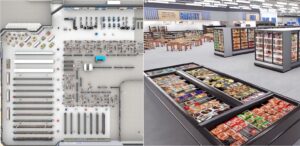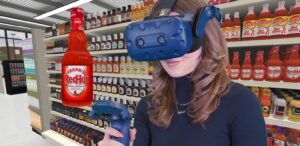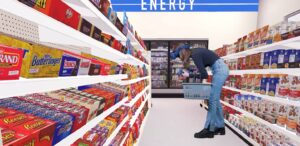Top CPG Trends to watch in 2024
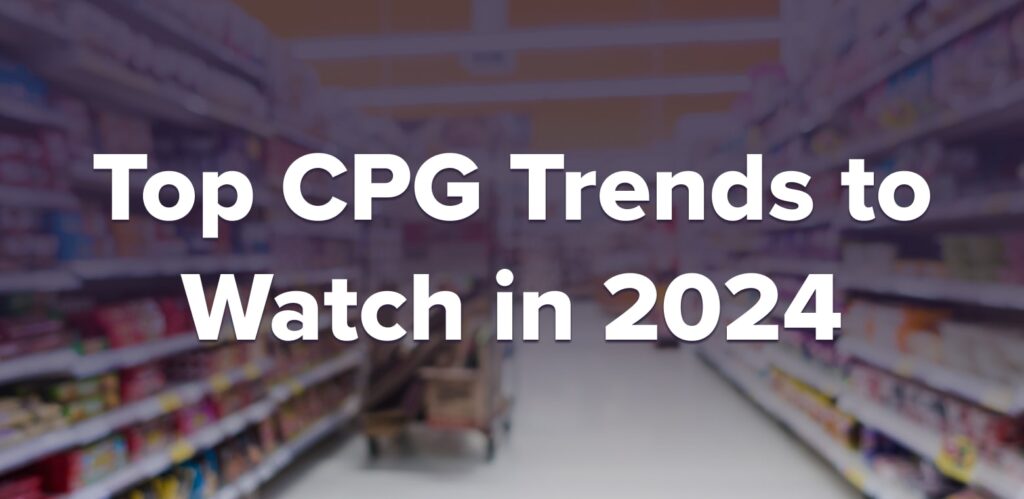
With 2024 well underway, several impactful shifts are poised to shape the consumer packaged goods (CPG) industry. From the intriguing influence of weight-loss medications on consumer spending behaviors to the digital transformation initiatives reshaping the CPG landscape, each trend brings forth unique challenges and opportunities.
The dynamism within the CPG sector fuels innovation, reshaping the manufacturing, packaging, and consumption of products. In this era of unprecedented change, staying ahead of the curve is imperative. Join us as we unravel the top CPG brands and trends set to make waves in 2024. Exploring the forces steering the industry towards a future of new technology, sustainability and reimagined customer experiences.
What is the CPG Industry
CPG, meaning consumer packaged goods, encompasses the wide array of products that we use regularly in our daily lives. From food and beverages to household essentials and personal care items, the consumer goods industry touches nearly every aspect of our routine. These goods are packaged and sold to consumers through retail outlets, making them essential components of the retail industry.
CPG vs. FMCG
FMCG means fast-moving consumer goods. A subset of consumer packaged goods (CPG) that encapsulates products characterized by rapid turnover and relatively low costs. These goods include perishables like meat and dairy, as well as high-demand items like soft drinks. They have a short shelf life, necessitating frequent restocking due to their swift consumer adoption.
FMCGs are a dynamic component within the broader CPG landscape and play a crucial role in constantly evolving consumer packaged goods industry trends. The FMCG industry's meaning is to adapt to dynamic market demands and contribute significantly to the industry's ongoing product evolution.
Top CPG Categories
A consumer packaged goods category refers to a specific group or type of products that is packaged and sold to consumers for personal use. Consumer packaged goods examples encompass a wide range of everyday items. CPG categories represent a distinct class of products that share common characteristics and serve similar consumer needs.
Consumer packaged goods categories are often strategically organized and placed in specific store sections or aisles. This layout is designed to optimize consumer shopping experiences and facilitate ease of navigation. The following are top categories of consumer goods examples.
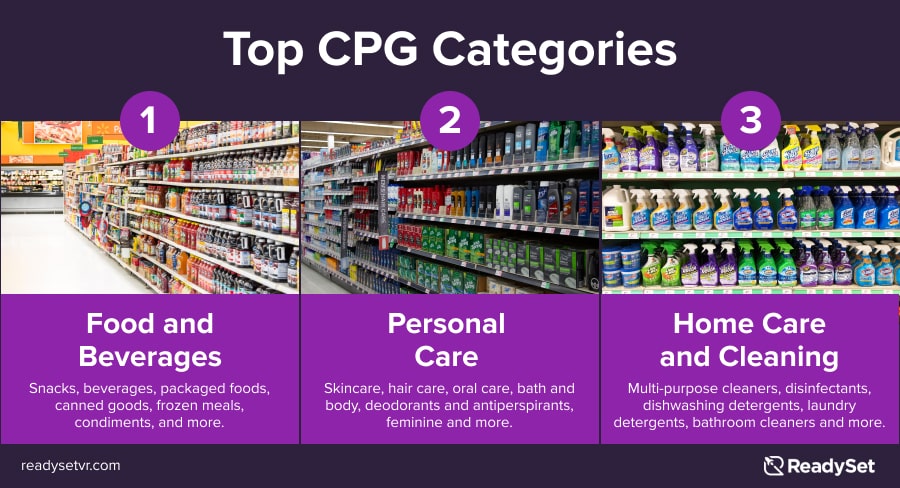
1. Food and Beverages
Food and beverage products represent the largest category within Consumer Packaged Goods (CPG). These items are designed for consumption and are typically packaged for easy purchase, use, and storage by consumers. The category encompasses a diverse range of products, including snacks, beverages, packaged foods, canned goods, frozen meals, condiments, and more.
Popular examples of CPG food and beverage brands include household names like Coca-Cola, PepsiCo, Nestlé, Kraft Heinz, Kellogg's, General Mills, Mars-Wrigley and Mondelez International. These companies manufacture and distribute a wide variety of products that are commonly found in grocery stores, supermarkets, convenience stores, and other retail outlets.
2. Personal Care
Personal care products constitute the second-largest category within Consumer Packaged Goods (CPG) and encompass items used for personal hygiene, grooming, and beautification purposes. Designed for individual use, these products are often packaged conveniently for consumers.
Examples of personal care products span skincare (such as lotions, moisturizers, and sunscreen), hair care (including shampoos, conditioners, and styling products), oral care (like toothpaste and mouthwash), bath and body (such as soaps, body washes, and bath salts), deodorants and antiperspirants, feminine hygiene products, and grooming items like razors, shaving cream, and aftershave.
Leading brands in the Personal Care category include Procter & Gamble, Unilever, Johnson & Johnson, among others. These companies manufacture and distribute a wide array of personal care products commonly available in retail stores, pharmacies, and online outlets.
3. Home Care and Cleaning
Home care and cleaning products are used to clean, sanitize, and maintain various surfaces and areas within the home environment. These products are typically packaged in various forms such as sprays, liquids, powders, and wipes for ease of use and storage.
Examples include multi-purpose cleaners, disinfectants, dishwashing detergents, laundry detergents, floor cleaners, bathroom cleaners, kitchen cleaners, glass cleaners, air fresheners, and furniture polish. These items are designed to clean, sanitize, and freshen various surfaces and areas within the home environment, ensuring cleanliness, hygiene, and comfort for residents.
Popular brands in the Home Care and Cleaning category include Procter & Gamble (with brands like Mr. Clean, Tide, Dawn, and Febreze), Clorox (with brands like Clorox, Glad, Pine-Sol, Formula 409, Tilex, SOS and Liquid-Plumr), SC Johnson (with brands like Windex, Scrubbing Bubbles, and Glade), and many others. These companies manufacture and distribute a wide range of products tailored to different cleaning needs and preferences, available in retail stores, supermarkets, and online outlets.
Largest CPG Companies
Consumer Goods Technology ranks the Top 100 CPG Companies that are publicly traded based on their fiscal year revenue to provide an annual look at the state of this industry. The following Top 10 CPG Companies in 2023 offer insights into the enhancements they made in their products, operations, technologies, and talent strategies that propelled them to their leading positions.
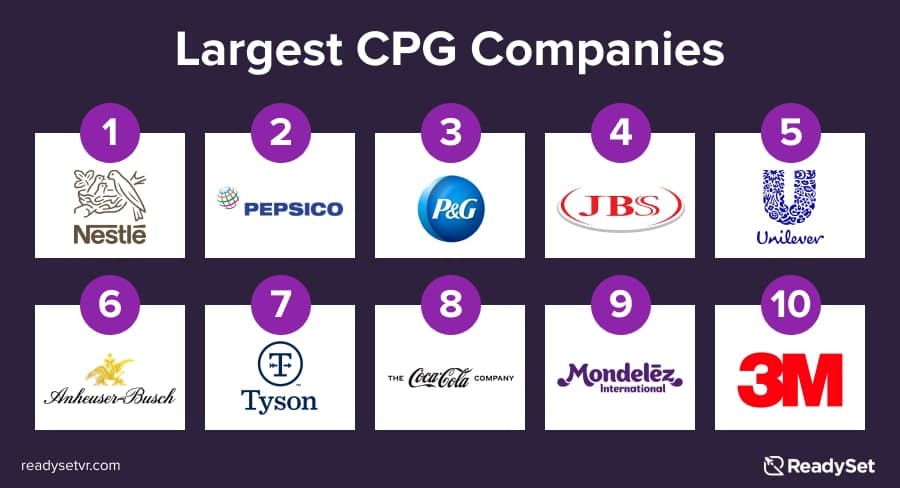
1. Nestlé
In 2023, Nestle S.A. remained the largest CPG company, boasting a remarkable $105 billion in net sales. Nestle's extensive portfolio spans various categories and includes beloved brands such as Nescafé, KitKat, Nespresso, Maggi, Toll House, and Milo.
2. PepsiCo
PepsiCo achieved a net revenue of $91 billion in 2023. Among its prominent brands are Pepsi, Mountain Dew, Frito Lay, Lay's, Quaker, Gatorade, Aquafina, 7UP, Doritos, Cheetos, and Ruffles.
3. Procter & Gamble
Procter & Gambles ended their 2023 fiscal year with net sales of $82 billion. Among their brands are household names such as Pampers, Tide, Olay, Gillette, Pantene, Febreze, Old Spice, Oral-B, and Vicks.
4. JBS S.A.
JBS Foods is a leading meat processing company with net revenue of $71 billion in 2023. Renowned for their diverse range of prepared foods, including both private label and branded offerings, their products are widely distributed in retailers, supermarkets, and restaurants under recognizable brands such as Swift, Pilgrim's, Blue Ribbon Beef, and Certified Angus Beef.
5. Unilever N.V.
In 2023, Unilever reported annual revenue of $64.5 billion. Their prominent brands in the United States include household names such as Axe, Ben & Jerry's, Degree, Dove, Hellmann's, Knorr, Magnum, TRESemmé, and Vaseline.
6. Anheuser-Busch InBev
Anheuser-Busch InBev reported revenue of $59.5 billion in 2023. Renowned for its diverse portfolio of beverages, the company boasts iconic brands such as Budweiser, Stella Artois, Michelob ULTRA, Corona, Bud Light, Busch, and Modelo.
7. Tyson Foods
Tyson Foods, a leading food processor and marketer of chicken, beef, and pork, reported annual revenue of $52.8 billion in 2023. They are recognized for their portfolio of well-known brands such as Tyson®, Jimmy Dean®, Hillshire Farm®, Ball Park®, Wright®, Aidells®, ibp®, and State Fair®.
8. The Coca-Cola Company
For 2023, the renowned beverage giant Coca-Cola disclosed an annual revenue of $45.8 billion. Among its array of popular soft drink brands are the classics like Original Coke and Diet Coke, alongside favorites such as Sprite, Fanta, Dasani, Minute Maid, Powerade, Simply Orange, Smartwater, and Fairlife.
9. Mondelēz International
Mondelez, a major player in the snack industry, achieved global net revenues of approximately $36 billion in 2023. The company is renowned for its iconic brands, including Oreo, Ritz, LU, Clif Bar, Belvita, Chips Ahoy!, TUC, Triscuit, Nabisco, Sour Patch Kids, Tate's Bake Shop, Cadbury Dairy Milk, Milka, and Toblerone chocolate.
10. 3M Co.
3M is a leader in the production of consumer goods spanning a diverse array of categories, from adhesives and abrasives to laminates and passive fire protection solutions. In 2023, the company achieved net revenues of $32.7 billion. 3M’s portfolio of iconic brands include Post-it notes, Nexcare bandages, Scotch Tape, Scotch-Brite, Bondo, and Thinsulate, among others.
CPG Trends
Staying current with CPG industry trends is crucial for consumer packaged goods companies and retail stores to thrive. Explore how new consumer spending behaviors are set to shape CPG marketing trends in 2024.
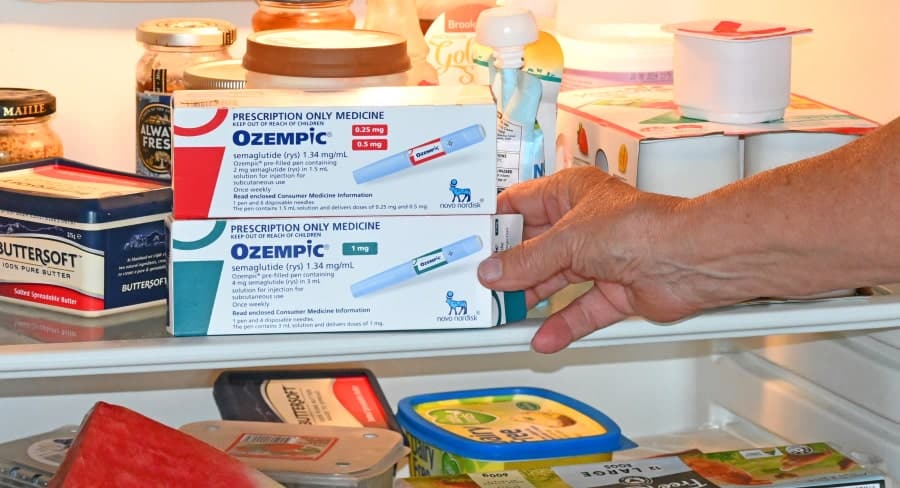
1. Monitoring usage of Ozempic and weight-loss drugs
GLP-1 medications, which include brand names like Ozempic and Wegovy, have gained popularity as a weight-loss option. These drugs that were initially developed for people with Type 2 diabetes, have been estimated to reach 24 million people (nearly 7% of the U.S. population) by 2035. Serving as a caution to food, beverage, and restaurant industries that they could see lower demand.
This has led to some buzz in the CPG community about the potential impact of glucagon-like peptide-1 (GLP-1) drugs on food and beverage purchase habits. Even the Walmart CEO stated there was a small decrease in total baskets from more individuals taking appetite-suppressing medications. Although this trend has left some investors concerned, there are numerous CPG leaders that are not overly worried and view this as another consumer behavior trend to navigate. These appetite suppressant households are shown to be scaling back on food and beverage purchases a mere 0.1% over the national average.
Manufacturers in the food and beverage industry are advised to closely monitor the duration of GLP-1 medication use, potential side effects, and their influence on eating and drinking habits, especially concerning their products. This heightened awareness should prompt CPGs to integrate a consumer approach tailored for GLP-1 users into their strategic plans, aligning it with other consumer groups. Additionally, there's a positive outlook for CPG categories with health and wellness brands, as studies indicate that GLP-1 households prefer products that are high-protein, energy-boosting, hydrating, and convenient for snacking.
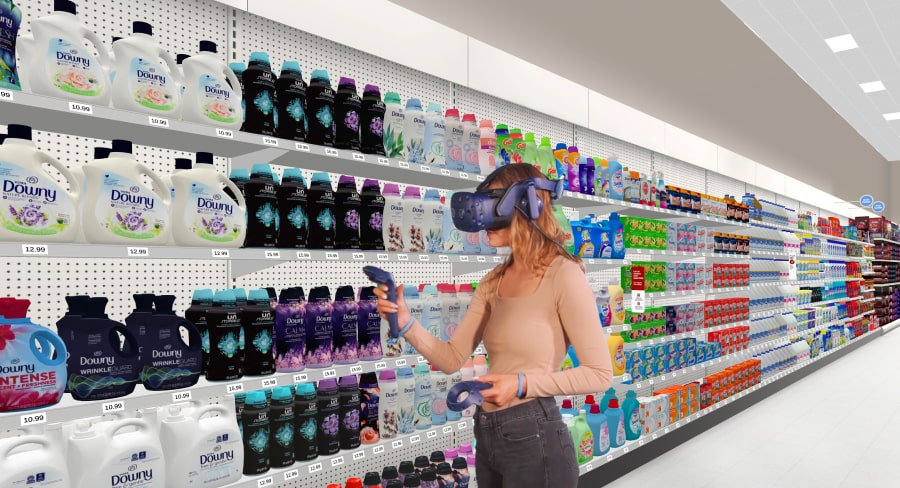
2. Digital Transformation Initiatives
In the upcoming year, the consumer packaged goods (CPG) industry is poised for a distinctive shift in spending priorities, with a significant emphasis on digital initiatives and business transformation. Despite an overall cautious approach to spending due to economic considerations, technology spending is expected to increase, underlining the central role of technology in shaping corporate strategy. Digital spending is identified as a priority, with key areas of technology investment including sales transformation, performance marketing, intelligent supply chain capabilities, demand-led design and engineering, revenue growth management, and modernizing data platforms.
Moreover, CPGs are showing a keen interest in emerging technologies like generative artificial intelligence (AI) and virtual reality (VR), which are viewed as tools for productivity enhancement across various functions, from product innovation to marketing campaigns. Virtual reality is redefining interpersonal connections, creating a "phygital" space where online interactions mirror the authenticity of in-person engagements. Many top consumer goods companies are embracing virtual reality tools for innovation and merchandise planning to thrive in the ever-evolving CPG market of 2024.
This transformative shift is influencing how individuals interact with brands, with a growing inclination towards investing in digital goods and experiences. As consumers seek personalized and immersive product showcases, the e-commerce realm is poised for a virtual transformation to align with heightened expectations for online shopping satisfaction.
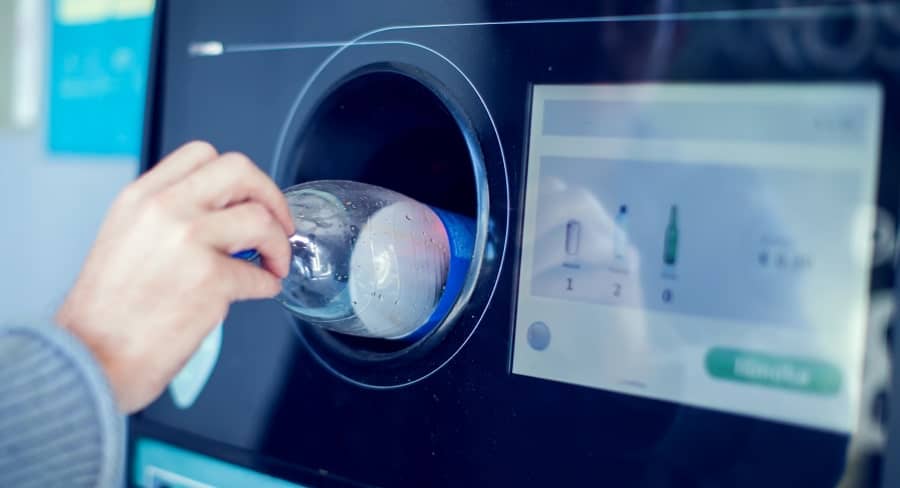 3. Sustainable Packaging Efforts
3. Sustainable Packaging Efforts
Despite the undeniable allure of environmentally friendly choices, consumers still face challenges due to the scarcity and high costs of sustainable products. A new perspective is emerging, emphasizing that sustainable consumption is intricately linked to corporate responsibility.
There is growing conscientiousness on CPG brand marketing to transcend greenwashing and adopt genuine sustainability practices. According to Gartner, 20% of organizations will focus on reducing their packaging’s carbon footprint in the next three years. Some of these actions include the reduction of packaging materials and utilization of materials produced, transported, and processed with enhanced efficiency.
Several key CPG players have introduced innovative sustainability packaging solutions. For example, Pernod Ricard tested single-mold paper-based Absolut Vodka bottles with a recyclable plastic barrier. Puracy launched the Clean Can System, an aluminum beverage designed to eliminate single-use plastics in cleaning. Nestle introduced paper-wrapped KitKat bars as part of a goal to reduce virgin plastics usage. Kraft Heinz tested a paper-based bottle made from sustainably sourced wood pulp. Additionally, Kellogg partnered with Albertsons on an in-store recycling initiative, contributing to their commitment for equitable food access by 2030. These initiatives showcase a growing trend among CPGs to adopt eco-friendly alternatives and foster a more sustainable future.
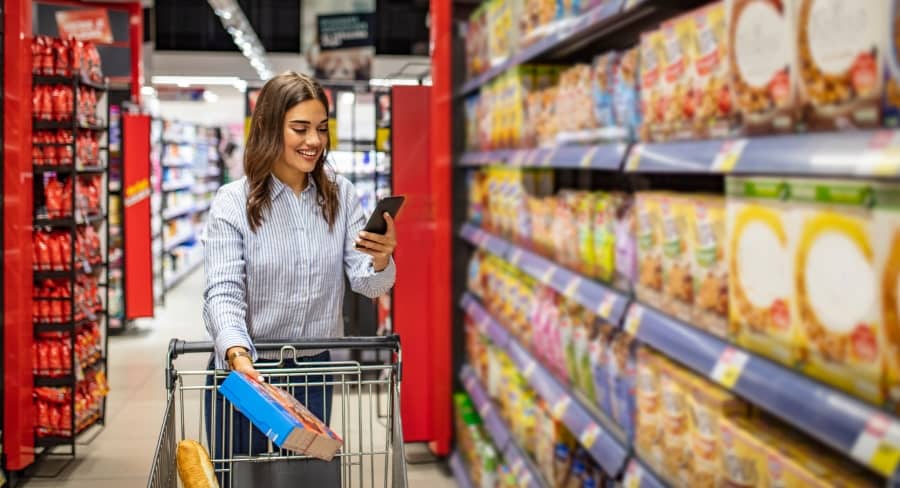
4. Retail Media Networks Reverse Retailers Role
Retail media networks (RMNs) are transforming the relationship dynamics between major retailers and consumer brands, disrupting the traditional model by having retailers actively pitch brands to invest in advertising across their platforms, including apps, websites, and in-store displays. This shift was discussed at NRF 2024, the recent National Retail Federation convention held from January 14-16 at the Javits Center in New York City, featuring an exclusive all-day program dedicated to RMNs.
The event spotlighted the increasing significance of in-store advertising for grocery stores, particularly targeting the crucial 18–49 age demographic among shoppers. Discussions emphasized the effectiveness of integrating RMN strategies with other advertising channels. Notably, retailers have evolved into primary sources of consumer intelligence, surpassing traditional ad agencies. Armed with data from loyalty programs, apps, and e-commerce, retailers now possess unparalleled insights into consumer behavior.
In a notable reversal, brands are seeking valuable guidance from retailers on strategic advertising placements, consumer resonances, and optimization approaches. This trend marks a significant shift, portraying retailers as central figures in shaping advertising strategies through their profound understanding of consumer preferences and behaviors.
Subscribe to our newsletter
Get our blogs and the latest retail news delivered to your inbox monthly.
Recent Posts
How to Use 3D VR for Smarter Store Layout and Design
Explore how VR is revolutionizing grocery store layout and design planning by offering enhanced blueprint visualization in immersive 3D environments. Grocery store layout strategy is essential for establishing a positive and productive customer experience. A thoughtfully designed layout not only improves convenience but also fosters a sense of discovery, leading to longer, more enjoyable shopping…
Sauce & Condiment Sales Heat Up as New Tech Helps Out
Young Millennials and Gen Z consumers have fueled a boom in hot sauce trends and condiment sales. This surge is pushing leading brands and retailers to elevate their game with smarter virtual product innovation and assortment optimization. The condiment and hot sauce industry is thriving in 2024, driven by evolving consumer tastes and the growing…
Candy, Bar, and Snack Industry use VR to Keep Up with Consumers
Discover the snack trends of 2024 that are pushing the snack bar market and candy industry to innovate and evolve using cutting-edge technology. The Convenience Store News 2024 Industry Deep Dive revealed numerous snack food industry trends, highlighting a shift toward healthier snacking options and a growing preference for savory flavors. As various snack categories…

